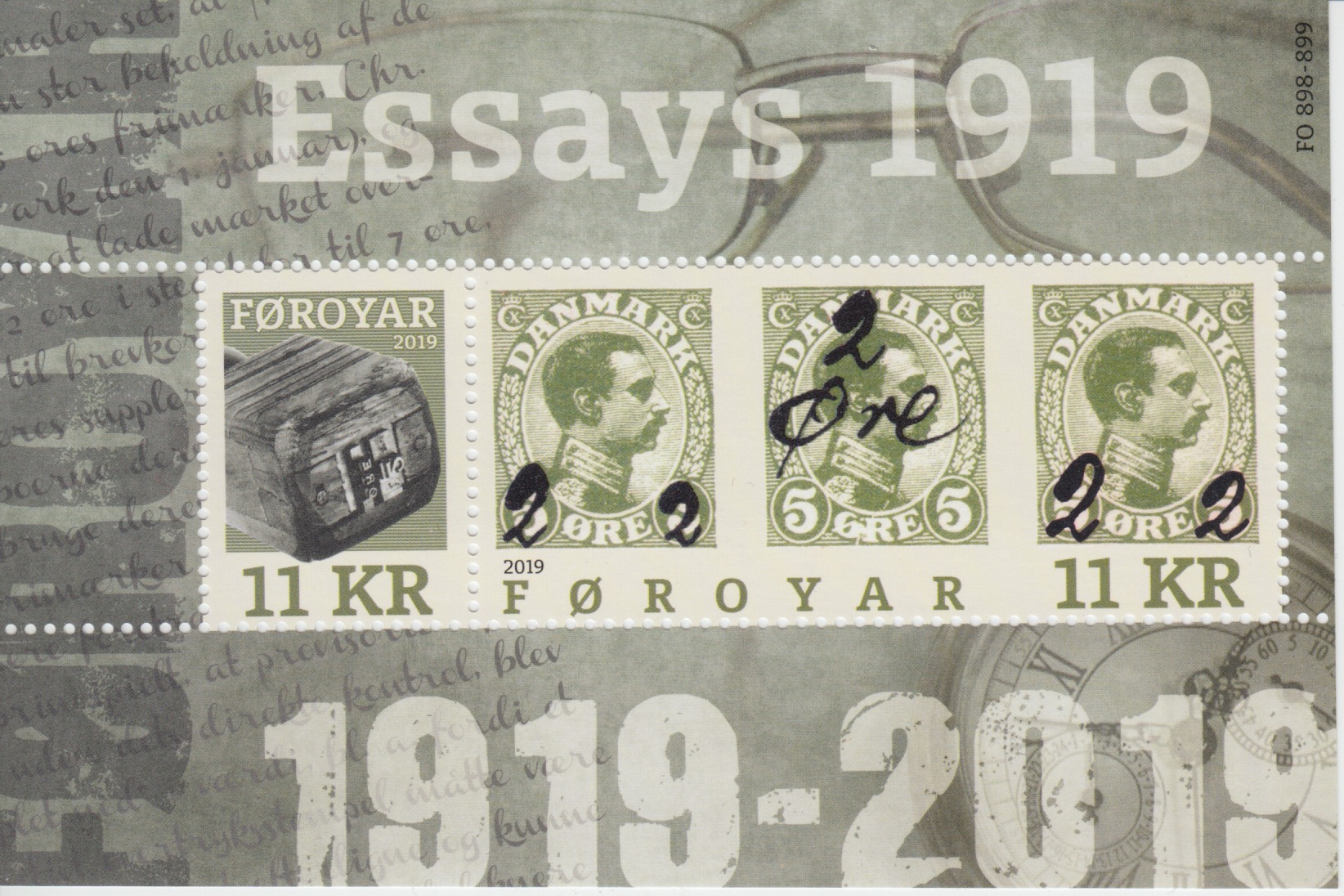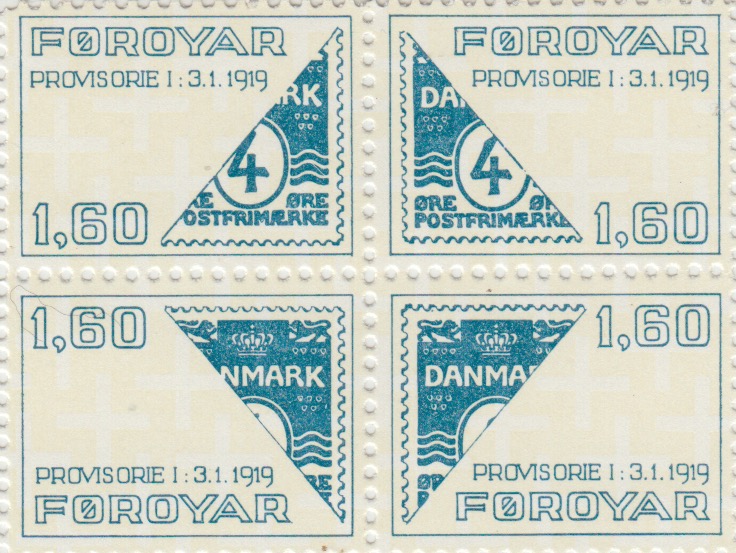Between 1st October 1916 and 30th June 1920 all of the
Faroes constituted a single local postal area and
therefore mail within the Islands could be sent at the
Local rate. The Inland rate applied only to mail to
Denmark.
Threrfore, up to the end of 1918, local letters could be
sent at the 5 Ýre rate (and postcards at the 3 Ýre
rate).
|
THORSHAVN
dated -4.4.1917
Used on a 3 Ýre (grey) stationery postcard.
Datestamp No. 01.05
Type Bro IIIb
Local postcard rate of 3 Ýre applied for post within the
Islands from 01.10.1888 until 31.12.1918 |
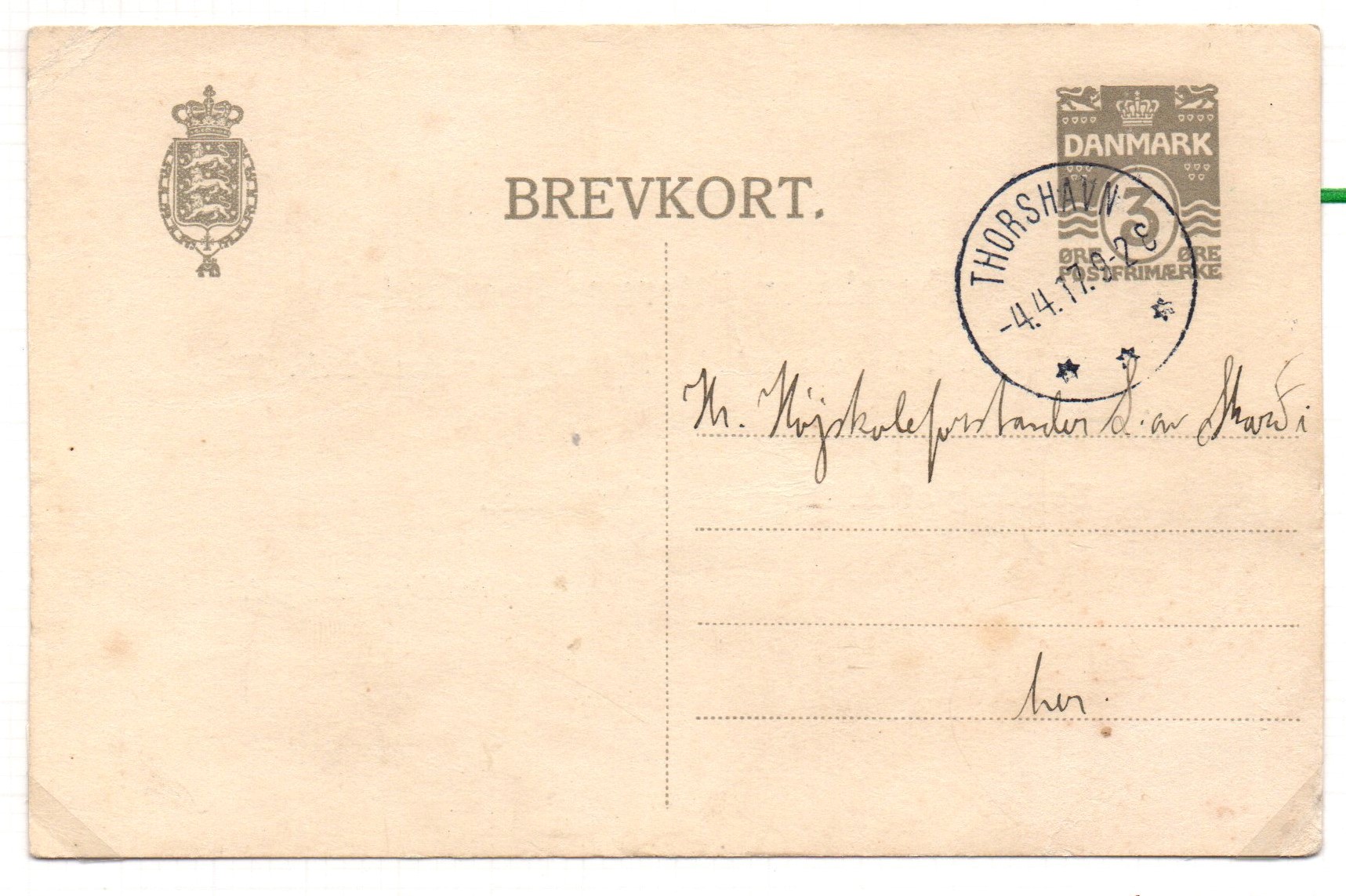
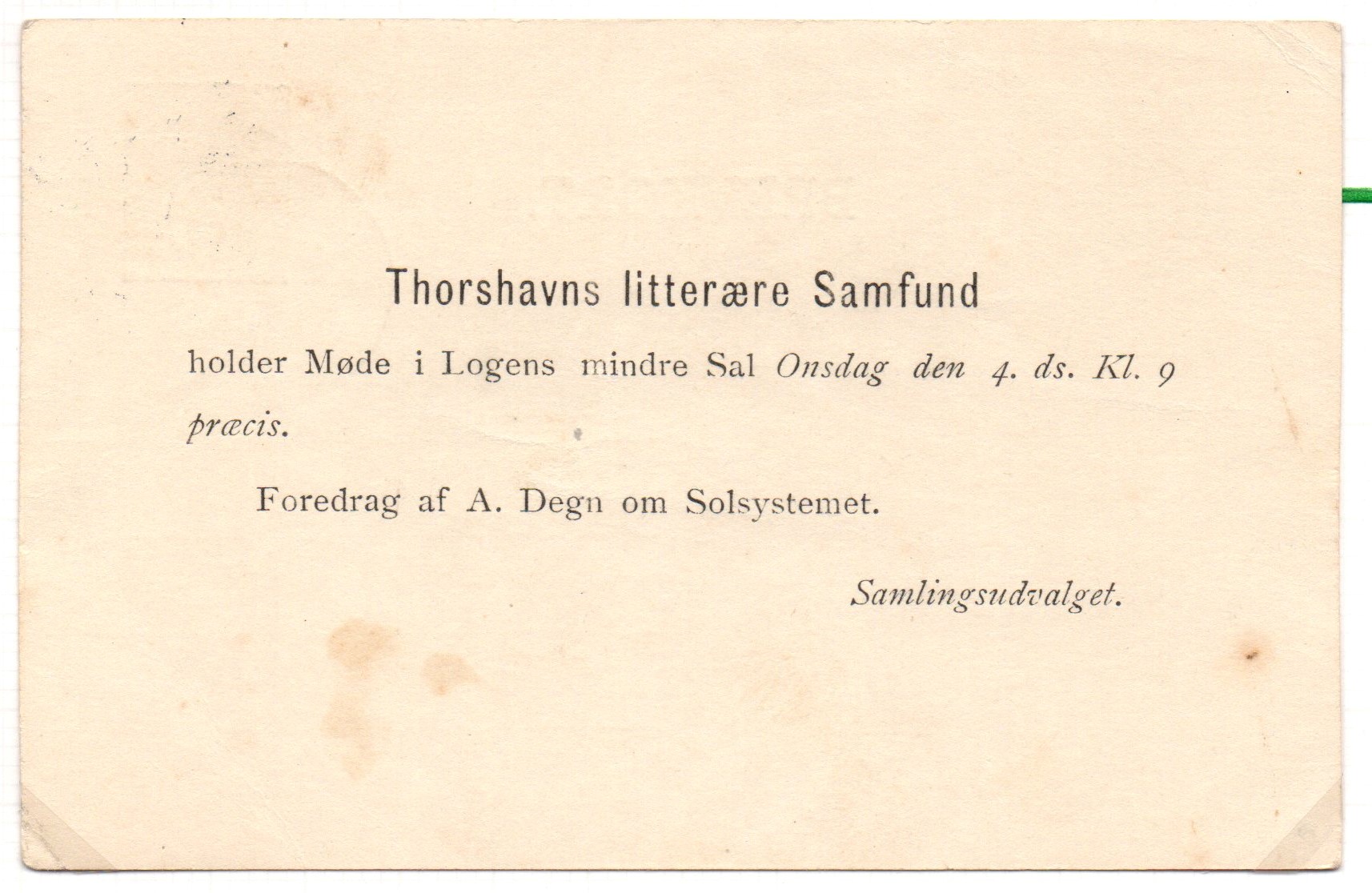
|
THORSHAVN
dated 18-11-1918
Franked with a 5 Ýre Christian X, green (SG135).
Datestamp No. 01.05
Type Bro IIIb
Relatively late usage of the Local letter rate of 5 Ýre
applied for post within the Islands from 01.10.1902
until 31.12.1918 |
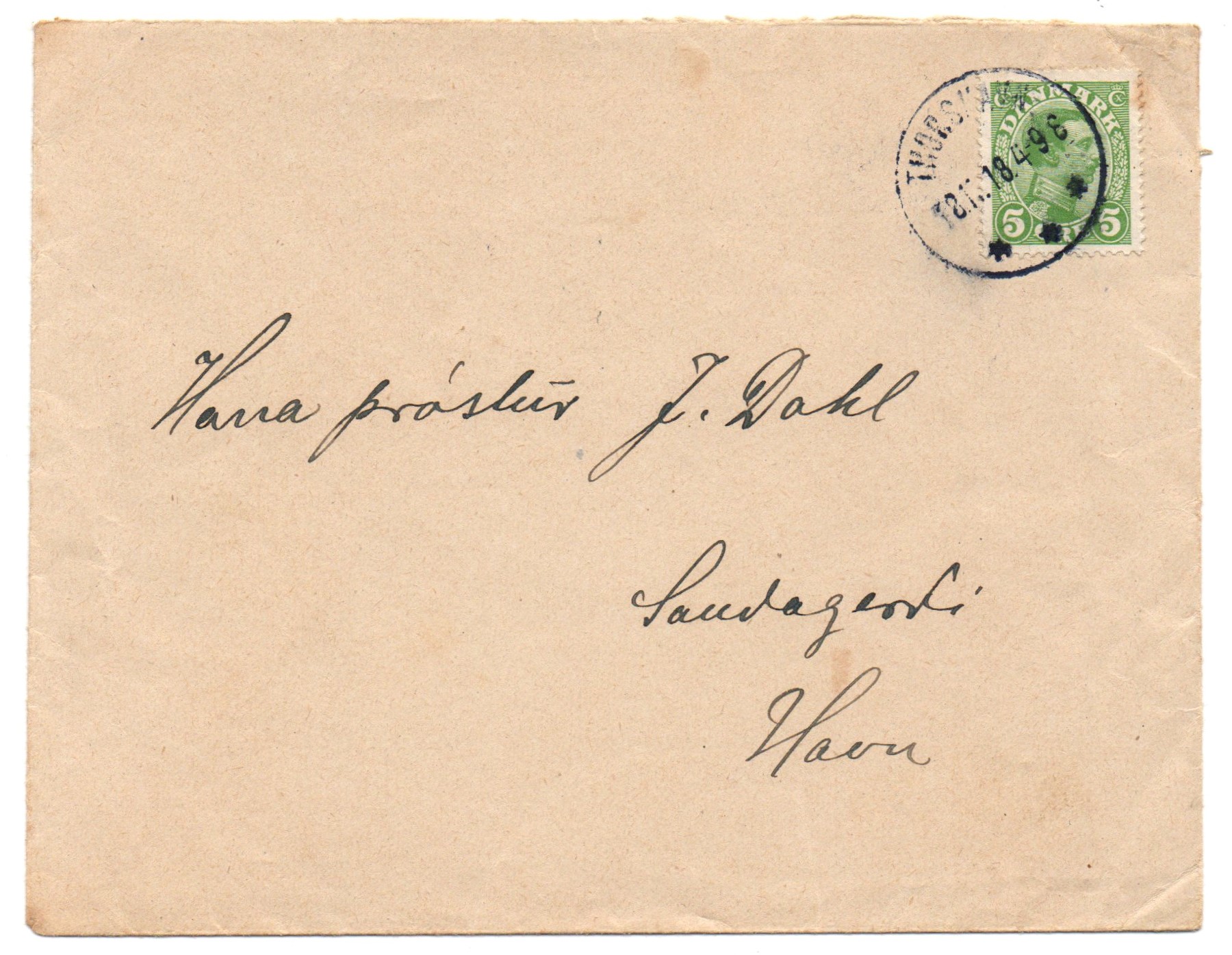
|
New postal rates came into effect on 1st January 1919,
the most significant change was the raising of the local
letter rate from 5 Ýre to 7 Ýre.
Due to shipping delays the newly issued 7 Ýre stamps
were not available locally and as a result existing
stocks of 1 Ýre and 2 Ýre stamps that were used to
supplement the 5 Ýre stamps were soon exhausted.
In response to these shortages the postal headquarters
in Copenhagen instructed Torshavn postal officials to
start bisecting existing 4 Ýre stamps on 3rd January
and to use them as 2 Ýre. Although commercial use of
stamp bisects are know later, most were used before
14th January.
Block of
four essays of 1.60kr stamp for Europa CEPT
issue of 1979.
(60th anniversary of use of bisected 4 Ýre
stamps).
|
THORSHAVN
dated 11.1.1919
Franked with a 5 Ýre King Christian X, green (SG135)
together with a Bisected 4 Ýre Wavy-line, blue (DK1A)
Datestamp No. 01.05
Type Bro IIIb
Local letter rate of 7 Ýre applied for post within the
Islands from 01.01.1919 until 14.10.1919.
|

|
From 6th January 1919 newspaper wrappers were then cut
up, removing their 4 Ýre frankings and bisecting them.
Since wrappers were not gummed, these bisects were
affixed with improvised glue or tucked under an
accompanying stamp. These bisects are known to have been
used commercially until at least February 1919.
|
THORSHAVN
dated 12.1.1919
Franked with a 5 Ýre King Christian X, green (SG135)
together with a Bisected 4 Ýre newspaper wrapper, blue
(DK2A)
Datestamp No. 01.05
Type Bro IIIb
Local letter rate of 7 Ýre applied for post within the
Islands from 01.01.1919 until 14.10.1919.
|

|
With copies of the 4 Ýre stamp running short further
permission was granted to produce a local 2 Ýre
overprint on 5 Ýre. Each overprint was applied by hand
using printer's type, set into the base of a chair leg.
Some very uneven (and even inverted) overprints were
produced as a result, including double and partly double
overprints. The new overprinted stamps first went on
sale on 13th January 1919.
|
Provisional 2 Ýre overprint on 5 Ýre King Christian X,
green
(DK3).
Unused with original gum.
With MÝller certificate.
|
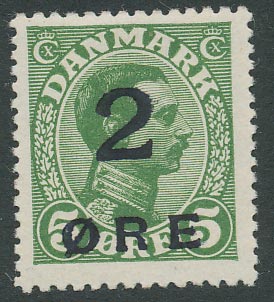
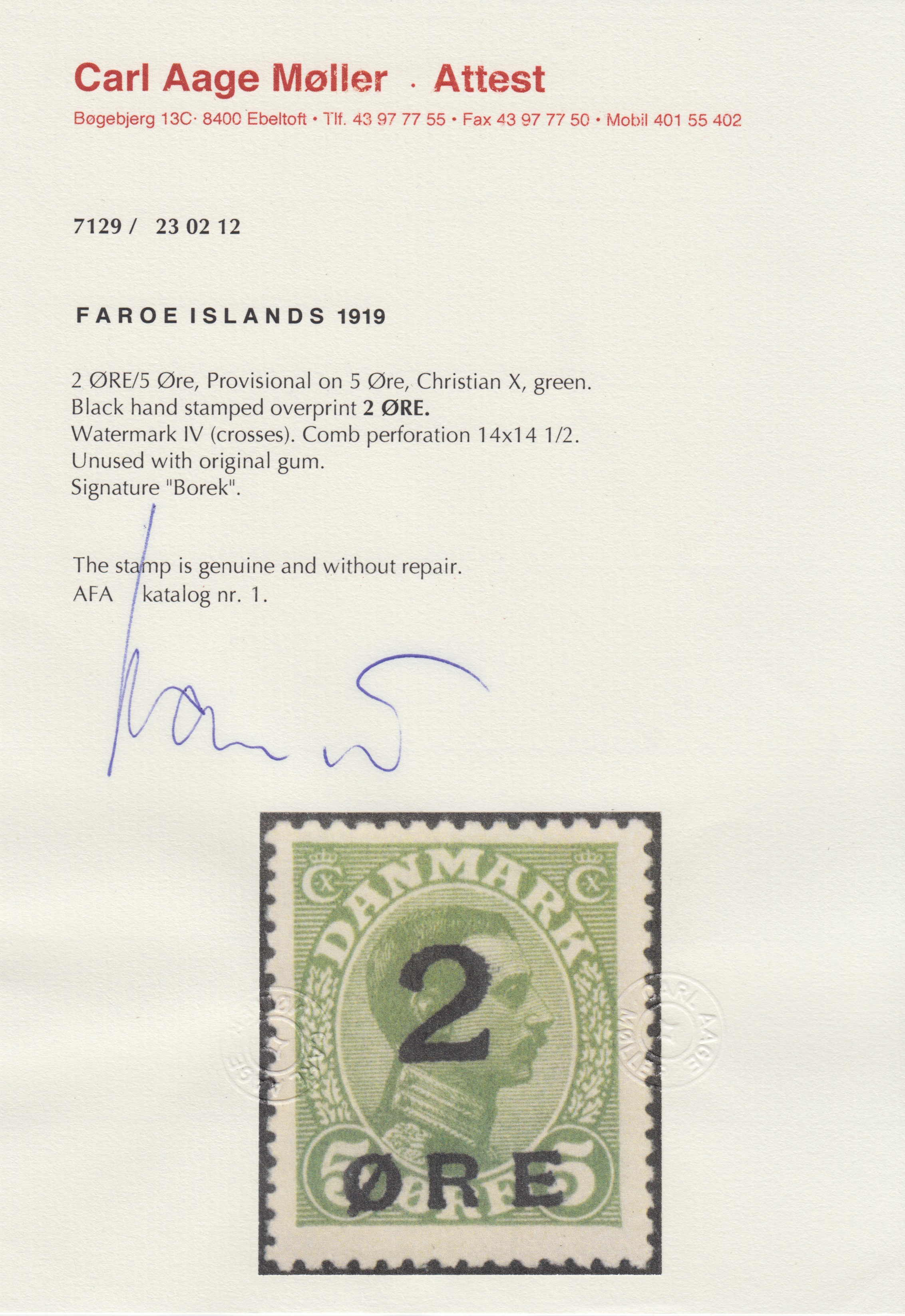
|
THORSHAVN
dated 20.1.1919
3 Ýre Wavy Line Stationery card, grey (SG111), together
with a local (provisional) 2 Ýre overprint on a 5 Ýre
Christian X green (DK3), to make up the new 5 Ýre rate
Datestamp No. 01.05
Type Bro IIIb
Local Postcard rate of 5 Ýre applied for post within the
Islands from 01.01.1919 until 14.10.1919.
A very rare combination |
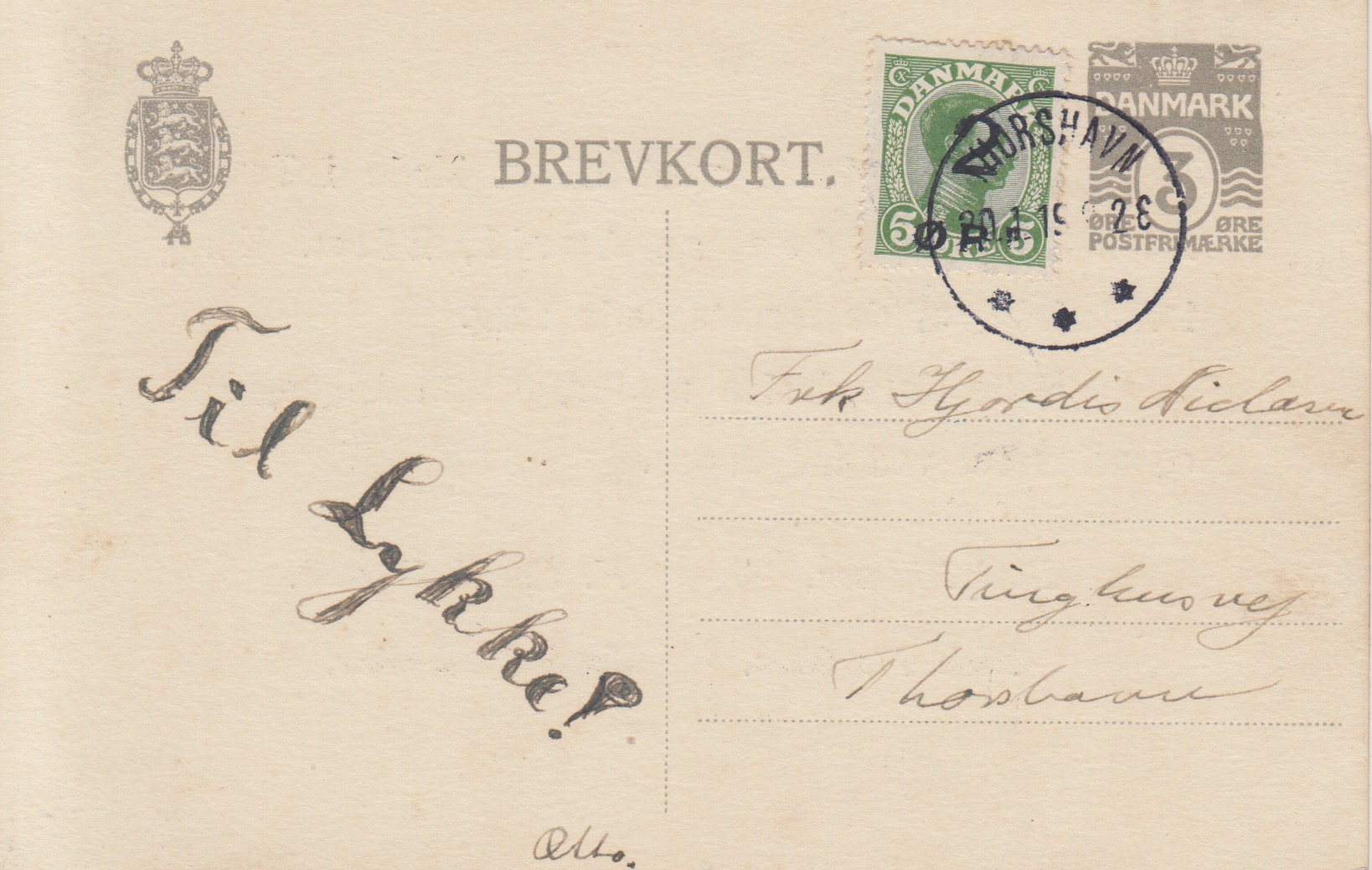
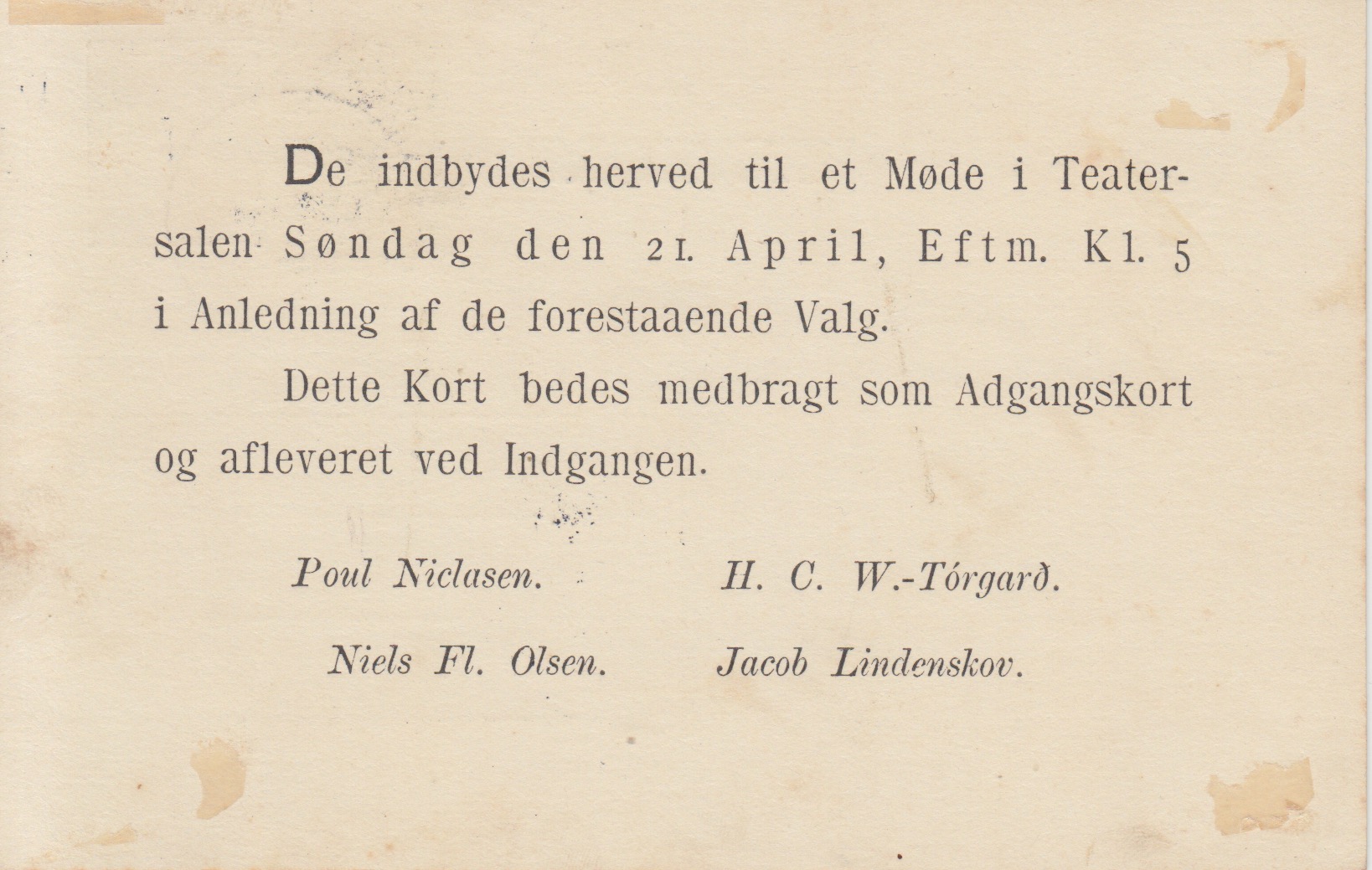
|
THORSHAVN
dated 21.1.1919
Franked with a 5 Ýre Christian X, green (SG135),
together with a local (provisional) 2 Ýre overprint on a
5 Ýre Christian X green (DK3), to make up the new 7 Ýre
rate
Datestamp No. 01.05
Type Bro IIIb
Local letter rate of 7 Ýre applied for post within the
Islands from 01.01.1919 until 14.10.1919.
|
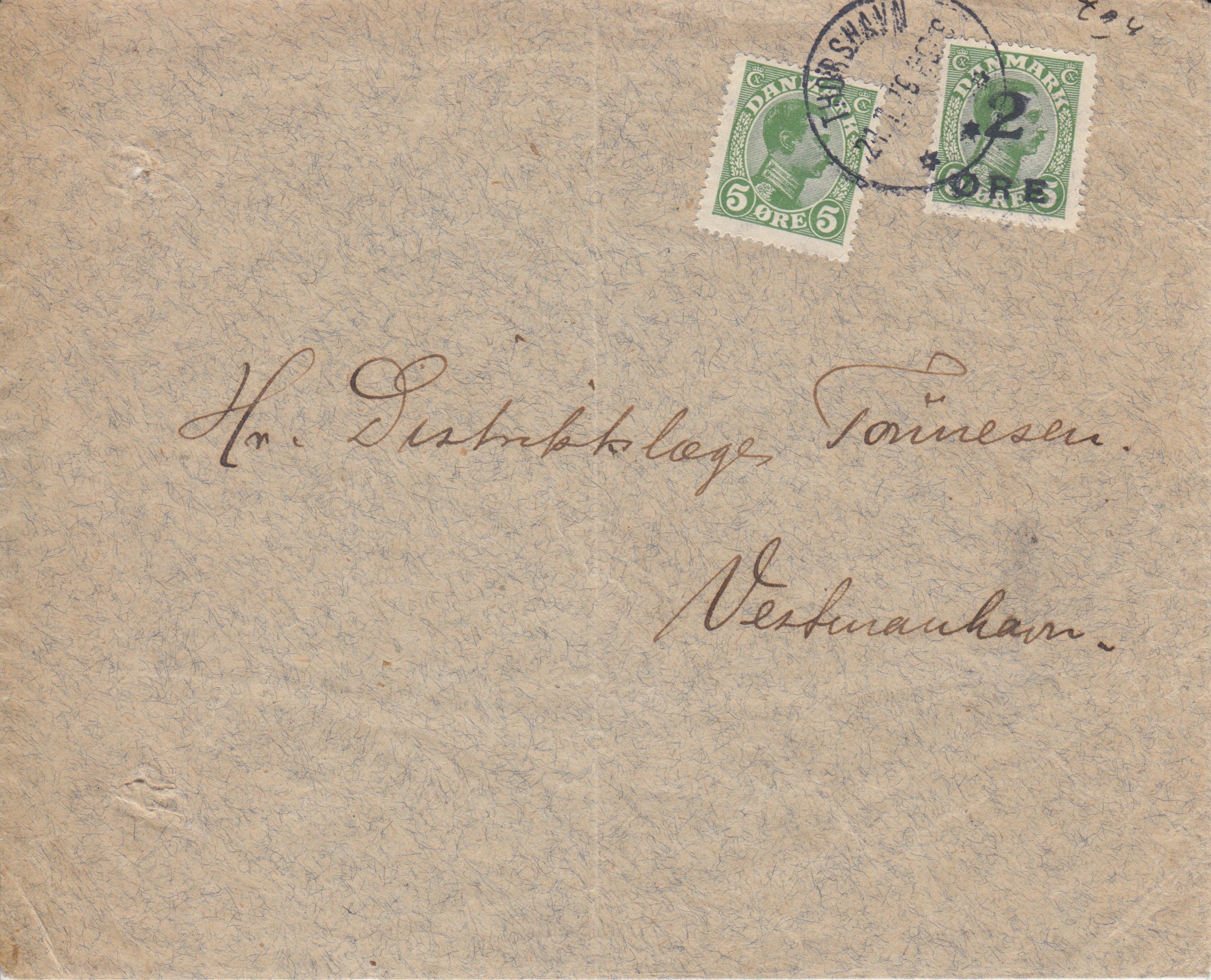

|
THORSHAVN
dated 18.1.1919
Franked with a 5 Ýre Christian X, green (SG135),
together with a local (provisional) 2 Ýre overprint on a
5 Ýre Christian X green (DK3), to make up the new 7 Ýre
rate
Datestamp No. 01.05
Type Bro IIIb
Local letter rate of 7 Ýre applied for post within the
Islands from 01.01.1919 until 14.10.1919.
|

|
New issues of the 7 Ýre, orange, King Christian X stamp
for the revised postal rates did not arrive until 23rd
January 1919.
|
THORSHAVN
dated 19.8.1919
Franked with a 7 Ýre King Christian X, orange (SG136).
Datestamp No. 01.05
Type Bro IIIb
Local letter rate of 7 Ýre applied for post within the
Islands from 01.01.1919 until 14.10.1919.
|
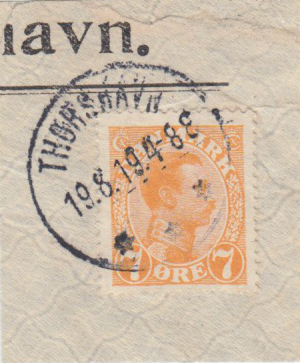
|
Further increases in postal rates on 15th October 1919
meant the new 7 Ýre stamp was no longer used for local
letters, this rate having increased to 10 Ýre.
However, the new 7 Ýre stamp remained in use as it now
fulfilled the new local postcard rate which remained
until 30th June 1920.
|
THORSHAVN
dated 22.12.1919
Franked with a 7 Ýre King Christian X, orange (SG136).
Datestamp No. 01.05
Type Bro IIIb
Postcard sending seasonís greetings, addressed within
the islands, sent at the local postcard rate of 7 Ýre
which applied for postcards within the Islands
from 15.10.1919 until 30.06.1920.
|
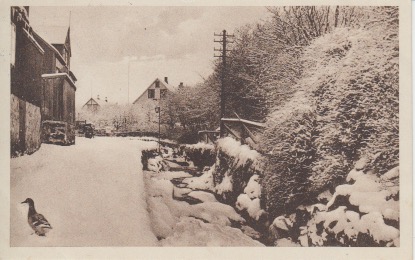

|
THORSHAVN
dated 10.5.1920
Franked with a 10 Ýre King Christian X, scarlet,
SG138.
Datestamp No. 01.05
Type Bro IIIb
Local letter rate of 10 Ýre (250g) applied for post
within the Islands from 15.10.1919 until
28.02.1921. However the rate for this letter from
Thorshavn to Kvivig would increase on 01.07.1920 due to
changes in the rules governing Local rate mail (see
below)
|

|
On 1st July 1920 the rules for Local rate mail changed.
Local rates were now only applicable for mail sent
within the juristriction of a post office, sub-office or
minor sub-office, falling within a radius centered on
that office of one Danish mil (about 7.5km) whether
overland or by sea.
Examples of future Local Rate items can be found on the
General Postal
History page
|
